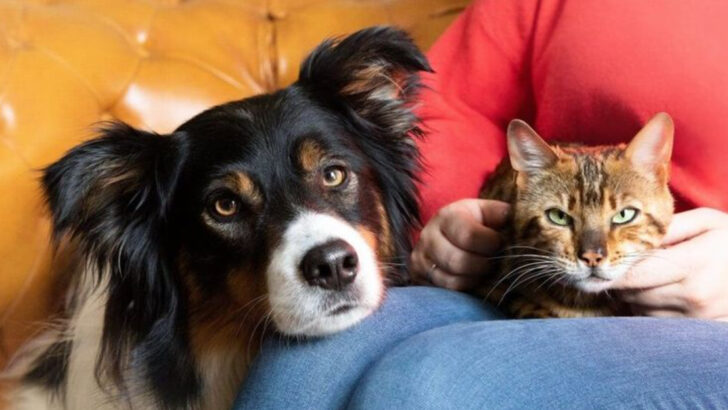Your cat isn’t just “tolerating” the dog—they’re plotting a silent rebellion.
Sure, there’s no hissing, no clawing… yet. But that slow tail flick? The way they vanish when the other pet enters the room? Oh, the drama is real—and it’s happening in plain sight.
Cats are masters of quiet judgment. They won’t throw a tantrum (most of the time). They’ll simply withdraw. Or glare. Or knock over something expensive when no one’s looking.
The signs are sneaky. The tension is building. And if you’re not paying attention, your “happy pet family” could actually be one grumpy whisker away from mutiny.
Let’s decode the subtle clues that your cat’s not exactly thrilled with their furry roommate—and how to keep the peace before things get messy.
Hissing and Growling
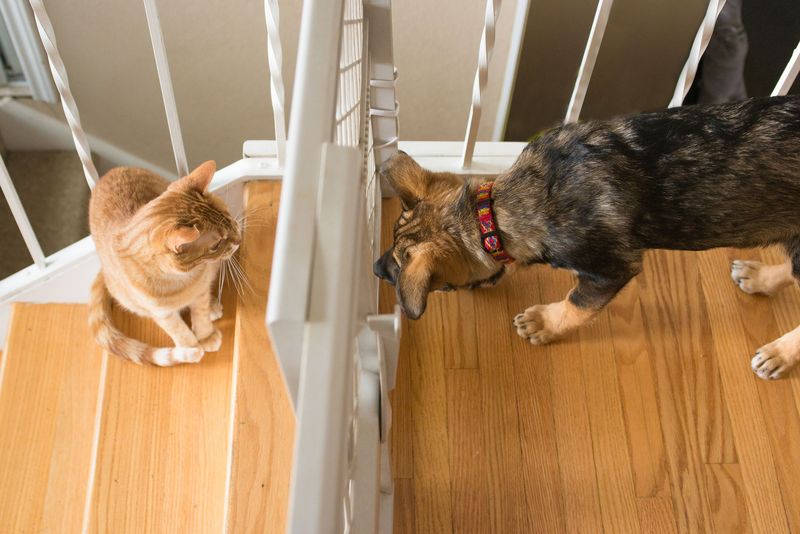
Hissing and growling may seem like obvious signs of feline displeasure, yet they often go unnoticed. Cats use these vocalizations to express displeasure or warn others to stay away. Imagine your cat arching its back, its eyes narrowing, and a low growl emanating from its throat. It’s a scene that could be straight out of a feline standoff! These sounds are your cat’s way of saying, “I’m uncomfortable.” Listening to these cues can prevent potential conflicts.
Swatting and Scratching

Sudden swatting or scratching is another subtle yet clear communication from your cat. Picture your cat quickly swinging its paw, fur bristling, as it defends its personal space. This isn’t mere play; it’s a feline warning signal. Cats resort to such behavior when they feel their territory is encroached upon. Learning to recognize these actions can help intervene before things escalate. By providing separate spaces, you can minimize these skirmishes.
Avoiding Shared Spaces

A cat avoiding shared spaces is often trying to send a silent message. Visualize your feline friend perched high on a windowsill, gazing down at the bustling world below, while your other pets lounge comfortably. This deliberate distance signals discomfort. Cats value their personal space and will retreat if they feel threatened. Observing these behaviors can clue you into underlying tension. By creating multiple pet-friendly areas, you can foster a peaceful coexistence.
Litter Box Issues
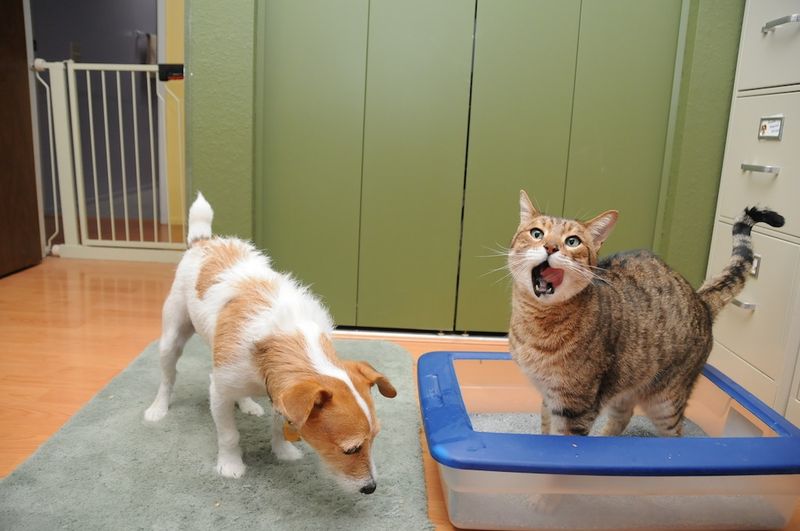
Litter box issues, such as urinating outside the box, can be a sign of stress or displeasure. Envision your cat walking past its litter box, casting a wary glance at a nearby playful puppy. This behavior might indicate unhappiness with the current living arrangement. Cats are creatures of habit, and disruptions can lead to such problems. Ensuring easy access to their litter box without interference from other pets can alleviate this stress.
Changes in Grooming Habits
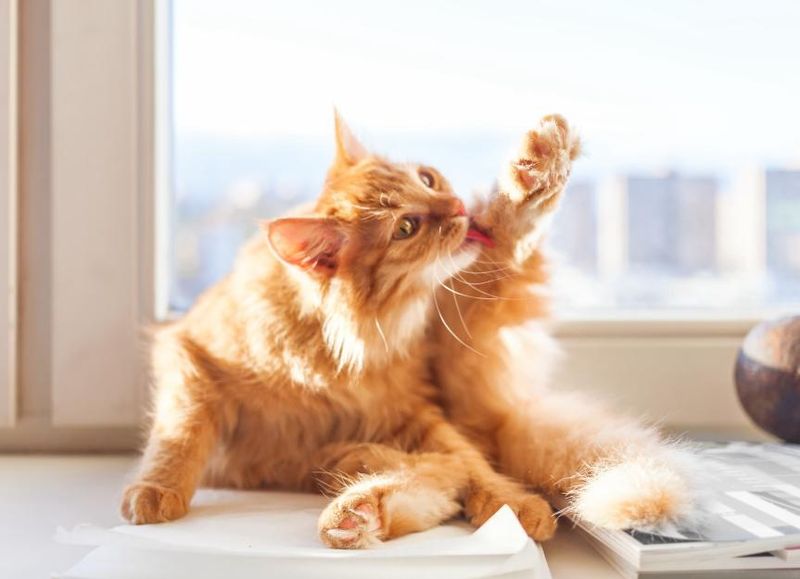
Changes in grooming habits can be a subtle indicator of feline anxiety or stress. Imagine your Persian cat meticulously grooming itself, yet pausing intermittently to cast cautious glances at a snoozing pooch nearby. Over-grooming or neglecting grooming altogether reveals a shift in your cat’s emotional state. By ensuring a stress-free environment, you can help restore your cat’s natural grooming routine and promote peace among your pets.
Eating Habits Altered
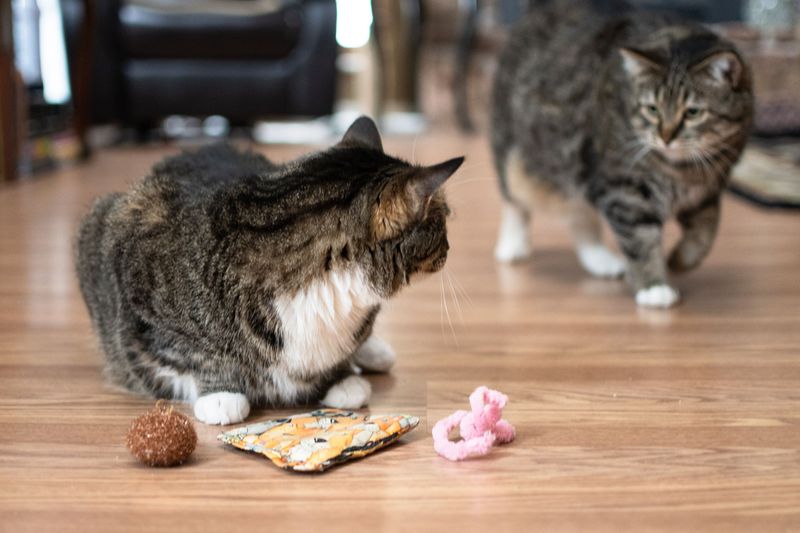
A change in eating habits can signal that a cat is unhappy with its companions. Picture a ginger cat nibbling on kibble in a lonely corner, while the family dog devours its meal without a care. Cats may eat less or skip meals entirely if they feel stressed or intimidated by other pets. Ensuring your cat has a separate, quiet eating space can help alleviate this tension and restore healthy eating habits.
Increased Territorial Marking
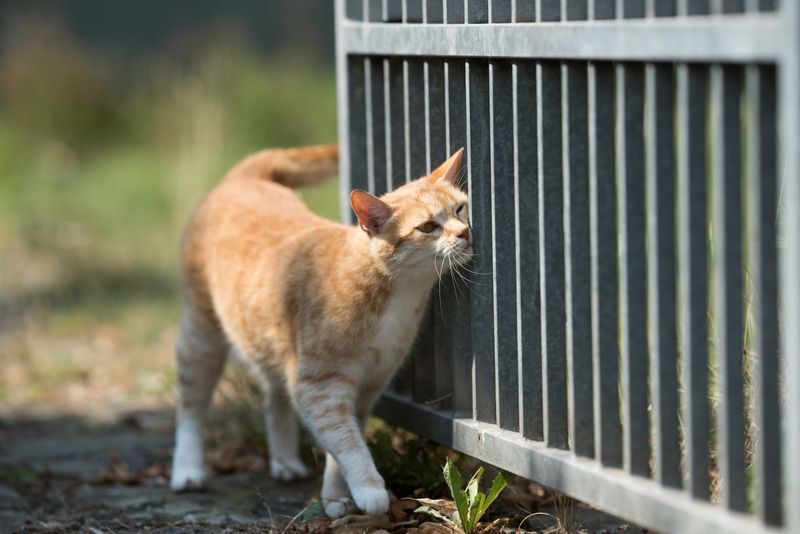
Increased territorial marking, like scratching, can indicate your cat’s dissatisfaction. Picture your Siamese cat vigorously scratching the living room sofa, while a curious puppy observes. Cats use marking to assert dominance and convey their space preferences. Recognizing this behavior can prevent destructive habits. Providing scratching posts and ensuring your cat feels secure in its environment can reduce the need for excessive marking.
Unusual Aggression
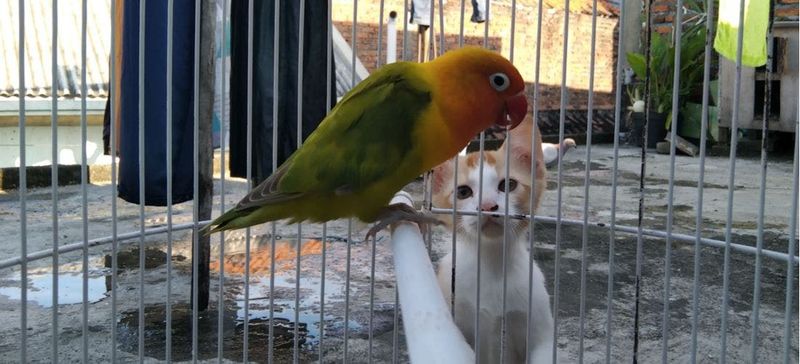
Unusual aggression towards other pets can be a sign of underlying tension. Visualize a tuxedo cat arching its back, tail fluffed, as a colorful parrot flits past. This sudden hostility isn’t just a fleeting mood; it signals deeper issues. Observing and addressing the triggers of such aggression can foster a harmonious environment. Providing stimulation and engagement can help redirect aggressive energy.
Hiding More Often
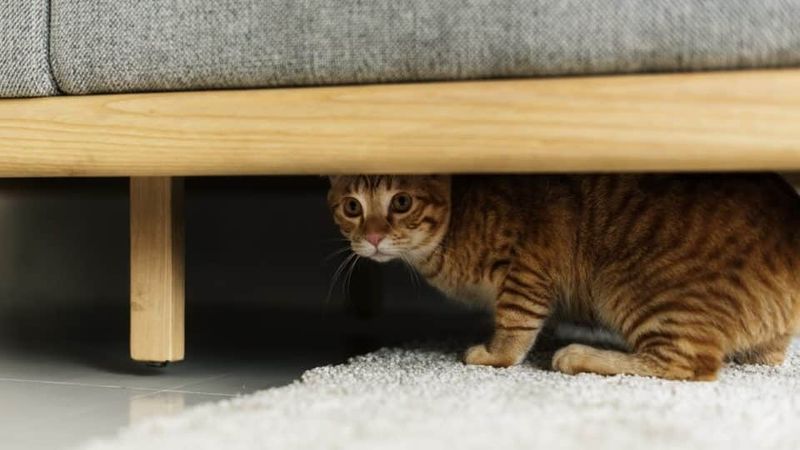
If your cat is hiding more often, it might feel overwhelmed. Picture a tabby cat nestled under a bed, its eyes peeking out as a large dog sniffs around. This behavior indicates a need for safety and solitude. Cats retreat when they perceive a threat, whether real or imagined. Providing safe, secluded hideaways can offer comfort to your cat and encourage a more relaxed atmosphere among your pets.
Lack of Playfulness
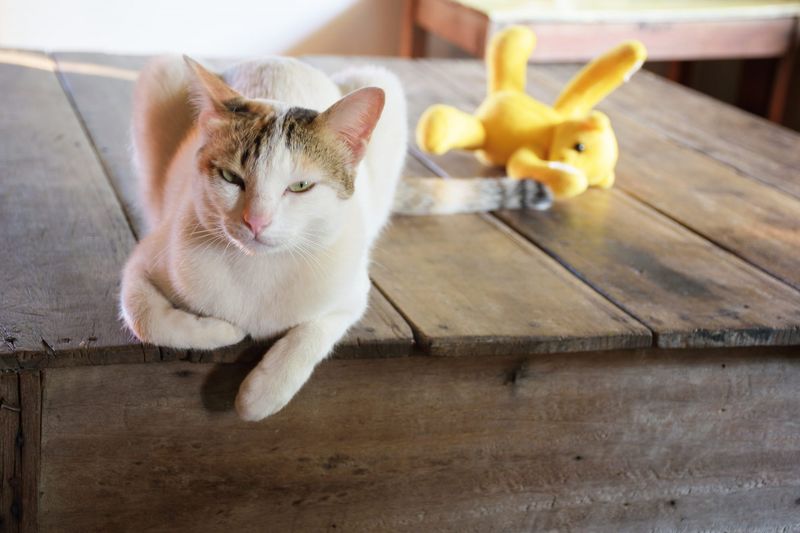
A sudden lack of playfulness could indicate that your cat is not happy with its companions. Imagine a Bengal cat sitting idly, watching a kitten frolic with a ball of yarn. This lack of engagement can signal discomfort or stress. Encouraging interactive play in a safe, neutral space can help your cat regain its zest for life and improve relationships with other pets.
Vocalization Changes

Changes in vocalization, like increased meowing or whining, may express your cat’s unease. Envision a vocal Siamese cat meowing persistently at a caged bird. This alteration in communicative habits might reflect anxiety or dissatisfaction. Paying attention to these auditory cues helps you understand your cat’s emotional state. Addressing the underlying causes can foster a more peaceful coexistence.
Over-Dependency on Human

An over-dependency on humans can be a sign of unresolved tension with other pets. Picture your Ragdoll cat glued to your side, casting nervous glances at a Labrador in the corner. This clinginess might mean your cat doesn’t feel at ease with its fellow creatures. Recognizing this need for reassurance allows you to address the root causes and promote harmony in the household.
Feline Standoffs
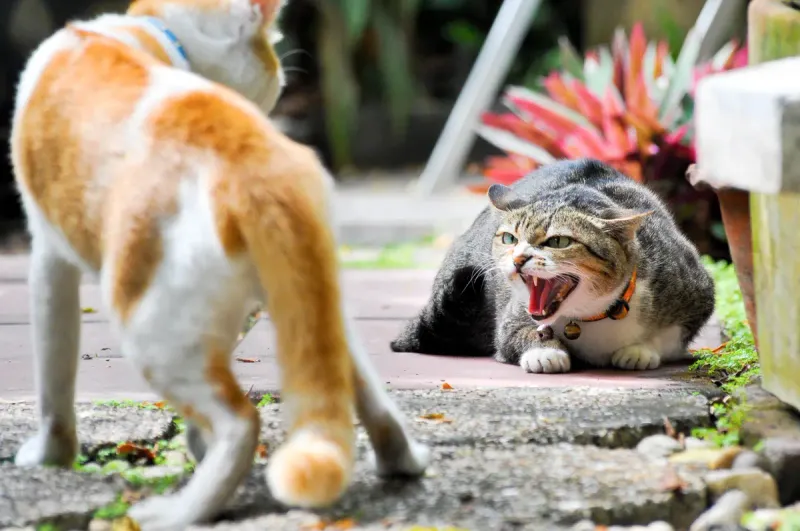
Feline standoffs are moments of tension that reveal underlying discord. Imagine two cats facing off, ears flattening, as a small dog watches with curiosity. These standoffs are your cat’s way of drawing boundaries. Understanding these interactions helps in mitigating confrontations. By ensuring each pet’s space and needs are respected, you can reduce these dramatic encounters.
Unexplained Weight Loss or Gain
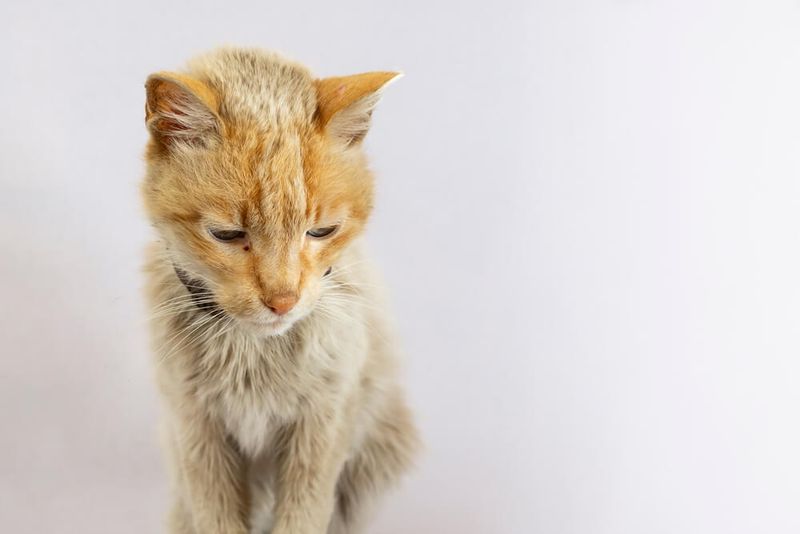
Unexplained weight changes can indicate stress or unhappiness in cats. Visualize a slender cat being weighed at the vet’s, its owner looking on with concern. Stress can affect a cat’s metabolism, leading to weight fluctuations. Regular vet check-ups and addressing the emotional needs of your cat can help maintain a healthy balance. Creating a secure environment where your cat feels supported reduces stress and promotes well-being.

